1.点击左边目录栏的“Control”标签,进入换热器结构其他选项的设置。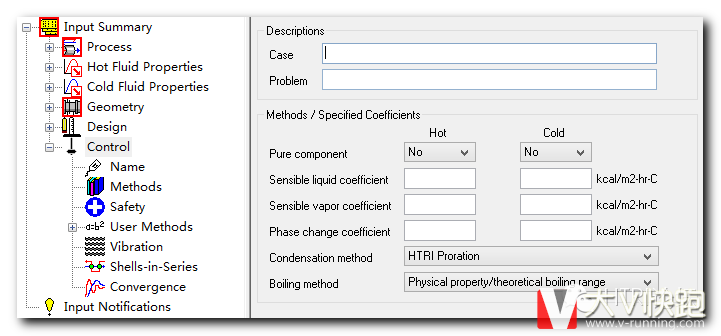
本节默认是不需要做输入的,不过为了对程序全面了解以及程序的“计算基础”有个感性认识,下面来浏览一下。文章源自云智设计-https://www.cidrg.com/cid-college/tutorial/htri/1813.html
(1) Case和Problem可输入工况和项目信息文章源自云智设计-https://www.cidrg.com/cid-college/tutorial/htri/1813.html
Methods/Specified Coefficients – 计算方法和系数规定文章源自云智设计-https://www.cidrg.com/cid-college/tutorial/htri/1813.html
(2) Pure component – 申明冷热物质是否纯物质,默认为否;文章源自云智设计-https://www.cidrg.com/cid-college/tutorial/htri/1813.html
(3) Sensible liquid coefficient – 定义单液相传热系数,程序将按输入值来计算总系数;文章源自云智设计-https://www.cidrg.com/cid-college/tutorial/htri/1813.html
(4) Sensible vapor coefficient – 定义单气相传热系数,程序将按输入值来计算总系数;文章源自云智设计-https://www.cidrg.com/cid-college/tutorial/htri/1813.html
(5)Phase change coefficient – 定义相变传热系数,程序将按输入值来计算总系数;文章源自云智设计-https://www.cidrg.com/cid-college/tutorial/htri/1813.html
(6) Condensation method – 冷凝计算方法,包括以下几种,默认为RPM。关于各种方法的更进一步介绍见专题部分。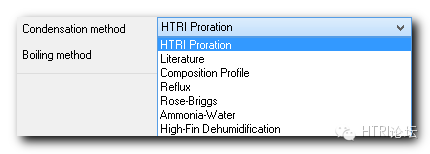 文章源自云智设计-https://www.cidrg.com/cid-college/tutorial/htri/1813.html
文章源自云智设计-https://www.cidrg.com/cid-college/tutorial/htri/1813.html
@HTRI Proration (RPM)文章源自云智设计-https://www.cidrg.com/cid-college/tutorial/htri/1813.html
@Literature文章源自云智设计-https://www.cidrg.com/cid-college/tutorial/htri/1813.html
@Composition Profile (CPM),不能用于像水和醇的溶液这样的极性物系
@Reflux
@Rose-Briggs
@Ammonia-Water
@High-FinDehumidification
(7) Boiling method – 沸腾计算方法,包括以下几种,默认为“Phys prop/TBR”,关于各种方法的更进一步介绍见专题部分。
@Phys prop/BR
@prop/Schluender
@Phys prop/TBR
@HTRI Falling Film
@Chun-Seban Falling Film
@Reduced prop/BR
2.Name卡片输入设备,提供输入文档和项目信息,以及备注等相关内容。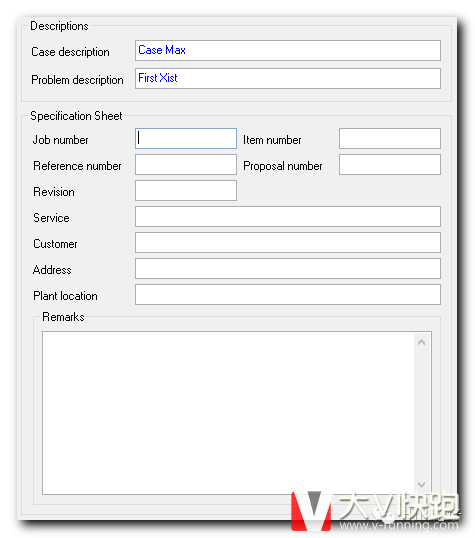
3.Method – 计算方法,这个卡片是对冷热侧流体传热计算方法的非默认设置,就是让你在具体工况用更合适的公式或修正因子来计算。详细解释见专题教程。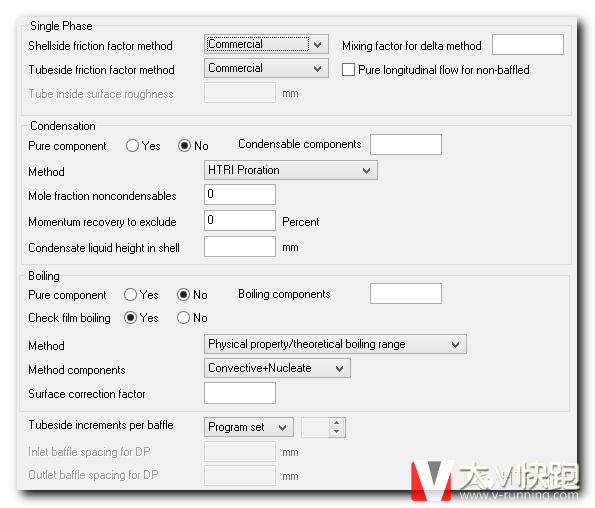





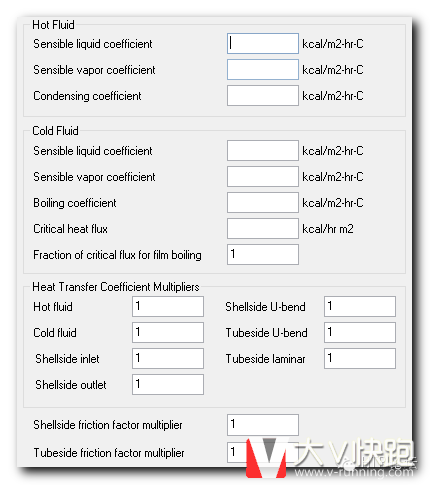








评论